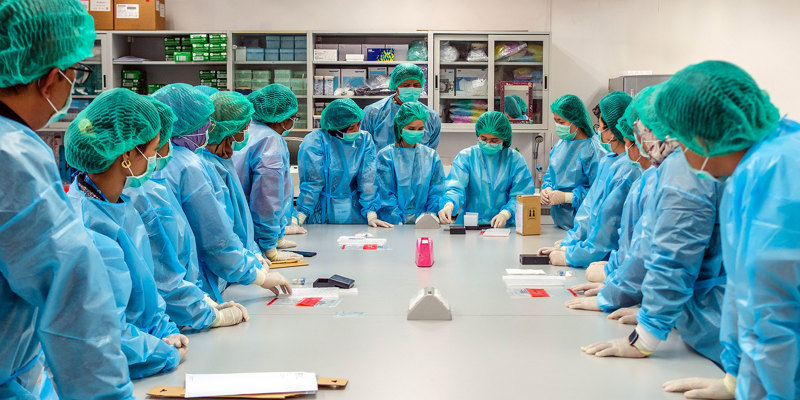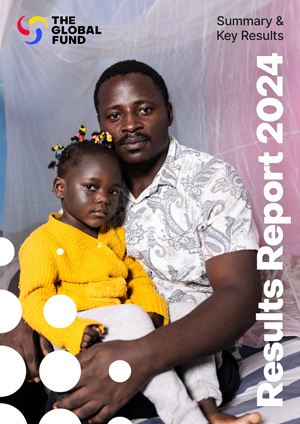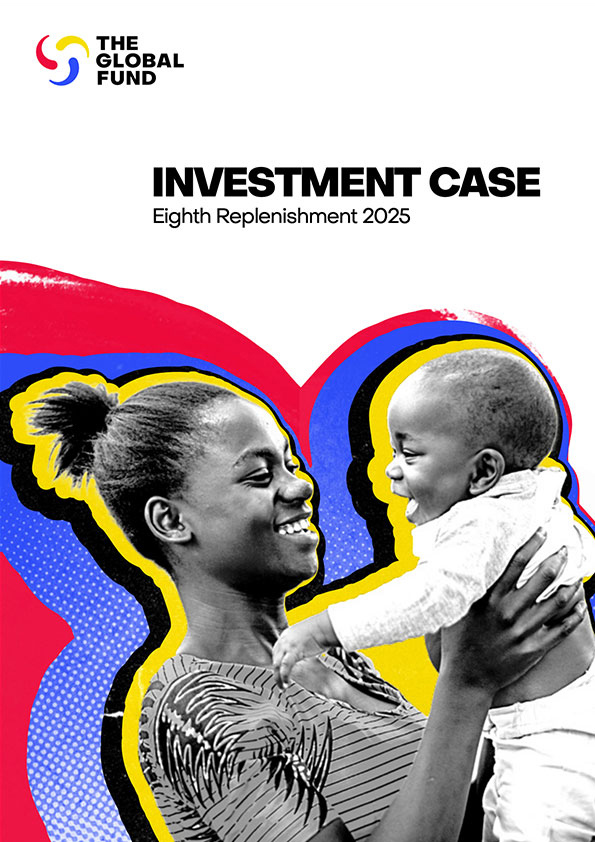

The Challenge of Malaria
In February 2020, just before COVID-19 made such trips impossible, I visited a village in the Kongo Central province of the Democratic Republic of the Congo and talked to a community health worker, called François Mvueki. Looking at his daily logbook, I was struck by the fact that over 95% of the entries were marked “paludisme” (malaria). He told me that although far fewer children were dying of malaria, he was still seeing the same number of cases, and he had very little time to do anything else.
By contrast, on an earlier trip to Ethiopia in 2019, I visited a village where malaria had been largely eliminated. Alem Abebe, the community health worker there, told me she had seen only a couple of cases in the last month. So her day was instead filled with pre- and post-natal checks for young mothers, infant vaccination, and helping people with a broad range of other diseases, including diabetes.
This comparison illustrates a frequently forgotten point about the interlinkage between interventions to combat specific infectious diseases and investments to build health system capacities. As these examples illustrate, the interaction between disease-specific interventions and health system performance is complex and goes both ways. Strengthening health system infrastructure and capacities undoubtedly enhances the effectiveness of disease-specific interventions (which is why the Global Fund to Fight AIDS, Tuberculosis and Malaria is the largest provider of grants for health systems strengthening). Yet reducing the burden of a disease like malaria is also a powerful way to free up health system capacity.
Nowhere is this truer than in the parts of Africa most heavily afflicted by malaria. In many rural health facilities, the sheer volume of malaria cases squeezes out almost everything else. We can and should increase staffing and other resources in these primary care facilities, but unless we can reduce the malaria burden, it feels like pushing water uphill.
Over the last two decades we have made significant progress in reducing deaths from malaria, with a 31% reduction between 2000 and 2021. However, some 600,000 people are still dying every year, mainly children under the age of 5 and pregnant women. Moreover, we have not made equivalent progress in reducing the numbers of people getting infected by malaria. In 2021, there were 247 million cases of malaria, compared to 245 million in 2020 and 232 million in 2019. That means we have not reduced the burden on the health system. Nor have we been successful in significantly reducing the impact on economic productivity or educational attainment, as sick employees lose days from work and sick children miss classes at school.
Furthermore, the malaria challenge looks set to increase, fueled by climate change and the increasing resistance of mosquitoes to insecticides and the malaria parasite to treatments. Without decisive action, we face the prospect of seeing more malaria cases and deaths, plus the knock-on negative impact on the ability of health systems to tackle other problems. For the poorest communities in the world, this would be a catastrophe.
We can avoid such a disastrous outcome, but only if we act swiftly to increase investment to accelerate the deployment of innovative tools, scale up interventions and strengthen critical health system capabilities, like disease surveillance, community health workers and last-mile logistics. The trade-off between investing in new tools and stronger health system capacities is a false choice. Community health workers need the latest tests and treatments to save the lives of children infected with malaria. Even the best tests and treatments are useless without properly trained and supported health workers to deliver them.
Defeating malaria is one of the most powerful things the global community can do to improve the lives of the poorest communities in the world. We have tools that work and better ones on the way. What’s lacking is the political will, and thus the money. Total global spending on malaria amounts to about US$3.1 billion per year, with the Global Fund by far the largest source, providing 63% of all international financing for malaria programs.
At this level of investment, we will find it extremely difficult to sustain–let alone accelerate–progress against malaria, given the impact of climate change and resistance. Another US$1 billion per year would be transformational: We could immediately save tens of thousands of children’s lives, we could get on track towards reducing infections, and we could simultaneously build and free up health system capacity, delivering better responses to other health needs and reinforcing pandemic preparedness.
If saving tens or hundreds of thousands of children’s lives is an insufficiently compelling argument, there is also a powerful economic case for stepping up investment now. Climate change is to malaria as gasoline is to an open fire. Yes, we should reduce the flow of inflammable fuel, but given the way global temperature increases are already baked in, we are not going to be able to turn the tap off soon. So, we must quench the fire as much as we can, while we still can. Otherwise, the costs will escalate rapidly.
It is a cruel fact that those who bear least responsibility for climate change–small children in the very poorest countries in the world–are amongst those most likely to be its earliest victims.
This op-ed was first published in Forbes.







